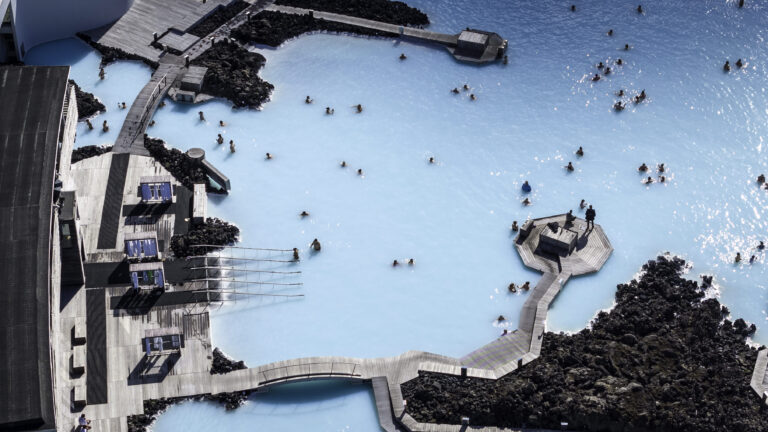Iceland wants tourists to flock to its picturesque ice caps and moon-like lava landscapes, but not at the expense of residents and the natural environment. Hotspots around the world, from Amsterdam to Venice, are introducing measures to crack down on the negative effects of overtourism while preserving tourism, which is often a vital source of income. “If we see that a place is being damaged by the number of people visiting Geysir, where the hot springs are, for example, then we need to take action,” Iceland’s Prime Minister Bjarni Benediktsson told CNBC.
The Blue Lagoon geothermal hot springs near the fishing village of Grindavik, Iceland, on May 23, 2024.
John Moore | Getty Images News | Getty Images
Iceland wants tourists to flock to its bubbling hot springs, picturesque ice caps and moon-like lava landscapes, but not at the expense of its residents or the natural environment.
The tiny Nordic nation of fire and ice isn’t alone: Hotspots around the world, from Amsterdam to Venice, are introducing measures to crack down on the negative effects of overtourism while preserving tourism, which is often a vital source of income.
“We are trying to set up a tax system for the tourism sector for the future,” Icelandic Prime Minister Bjarni Benediksson told CNBC via video conference.
“We want to lean more toward a user-pays system, and in my opinion, we want to put more emphasis on membership fees to national magnets, as we call them,” Benedictson said.
“That way, we can control the traffic volume. So, when there is peak demand, we can impose higher taxes by fixing the rates for a day or a few months or even for some periods of the year. But this is still in the planning stages.”
Earlier this year, the Icelandic government reinstated a so-called tourist tax, aimed at raising funds for sustainability programs and reducing the environmental impact of mass tourism.
The tax, which was suspended during the COVID-19 pandemic, imposes a small fee of 600 Icelandic krona ($4.34) on hotel rooms and various charges on campgrounds, mobile homes and cruise ships.
Lava floods the road leading to the famous tourist spot, the Blue Lagoon, near Grindavik, western Iceland, on February 8, 2023.
Kristin Magnusson | Editorial photo via Getty Images
Benediktsson said his predecessor’s reintroduction of a tourist tax was an “important decision” for the country, but he said the government needed to work harder to find the right balance.
Benediktsson, leader of Iceland’s right-wing pro-business Independence Party, became prime minister in early April, succeeding Katrín Jakobsdóttir, who previously served as prime minister in 2017.
His second term as leader comes at a time when the country is grappling with soaring interest rates, high inflation and a series of volcanic eruptions.
Late last month, a volcano in southwest Iceland erupted for the fifth time since December, spewing lava again threatening the coastal town of Grindavik.
The seismic activity also forced the evacuation of the Blue Lagoon geothermal hot springs, one of the country’s most popular tourist attractions. The lagoon was reopened to tourists after authorities said the eruption had subsided.
Iceland’s tourism industry is rebounding rapidly from a slump during the coronavirus pandemic, with the country of about 383,000 people expecting to welcome 2.3 million tourists this year, about 2.4 million in 2025 and as many as 2.5 million in 2026.
Revenues from tourism are becoming increasingly important to Iceland’s economy.
Indeed, Statistics Iceland, citing provisional figures from the Tourism Satellite Account, said the tourism sector would account for 8.5% of gross domestic product in 2023. This is up from 7.5% in 2022 and above the average of 8.2% recorded in the pre-COVID period from 2016 to 2019.
Skolavoldustiguur pedestrian walkway in Reykjavik, Iceland on November 11, 2023.
Bloomberg | Bloomberg | Getty Images
Looking ahead, Benediktson said the Government was undertaking its own “sustainability balancing check” on the development of the tourism tax system.
“We came up with a system where we look at certain indicators: Is nature in balance in a certain place? Is society happy with development? Is it a green, yellow or red light?” Benediktsson said.
“If we see that the number of people visiting Geysir hot springs, for example, is damaging the place, then we need to take action,” he added.
“These are things we are trying to develop, following the indicators and making sure that this industry grows while being embraced by society as well as nature.”

